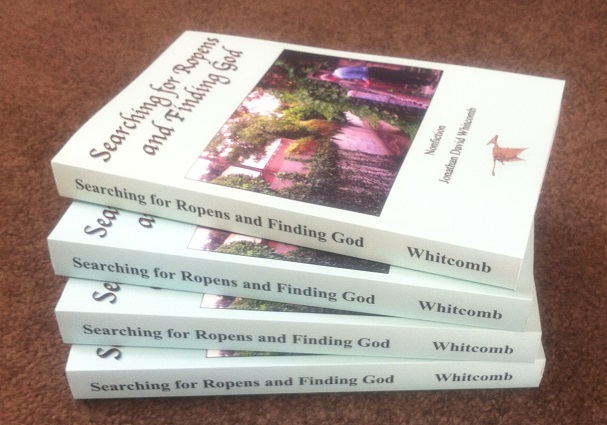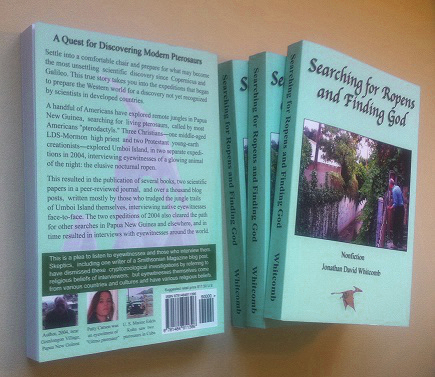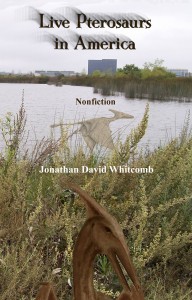Promoting Pterodactyls and the “Mormon Religion”
Did I promote the “Mormon Religion” by publishing my web page “Searching for Ropens and Finding God?” I would be delighted if a reader not yet a member of my church investigated the LDS faith after reading that page, yet that was not on my mind when I wrote it. This needs explaining.
A biology professor in Minnesota wrote a blog post, the other week, blasting my research and investigations into sighting reports of apparent pterosaurs (AKA pterodactyls). Most of his declarations about my intentions, however, were false. His mistake about my purposes in writing that page on lds-nonfiction-dot-com, however, was interesting to me; I was actually writing to members of The Church of Jesus Christ of Latter-day Saints who might enjoy reading my most recent book, Searching for Ropens and Finding God (every person deserves to know the truth). That’s why the page is on lds-nonfiction, instead of something like “Christian Nonfiction-Book Readers” or something like that. I was simply targeting members of my own church.
I suggest blog writers stick to issues rather than pin imagined motivations onto the names of those with whom they disagree. Bulverism may be getting worse, since C. S. Lewis invented that name. Since the biology professor in Minnesota was trying to discourage readers from considering my writings, using bulverism, I’ll quote, on the subject of bulverism, from the third edition of Searching for Ropens and Finding God:
The Smithsonian post suggests that Jim Blume and David Woetzel are themselves a problem, as they attempt to persuade people that dinosaurs and pterosaurs are still living. Switek says they’re creationist explorers, which nobody denies, but that labeling implies we should doubt modern pterosaurs could exist. Be aware: most eyewitnesses are non-creationists, a fact unknown to many skeptics. (Thus many eyewitnesses are shocked at what they see.) Let’s avoid even a hint of bulverism, examining ideas for their own strengths and weaknesses. Keep to the subject, the concept that one or more species of pterosaur may be still living. [page 295]
C. S. Lewis gave us “bulverism,” lamenting the decline of human reasoning. He defined the word in the mid-twentieth century: “The modern method is to assume without discussion that he [someone whose opinion you dislike] is wrong and then distract his attention from this (the only real issue) by busily explaining how he became so silly.” How much better to talk about the subject at hand! [page 326]
###
Evidence for Pterosaurs and Honesty
For modern living pterosaurs, however, we have BOTH physical evidence and eyewitness evidence. The difficulty some persons have with it, however, is that reported eyewitness encounters with living pterosaurs dominate the physical evidence, in both quantity and quality. So if you quickly scan a few sentences on one or two web pages, on modern pterosaurs, you’ll see only one or two sighting accounts, probably eyewitness evidence, not physical.
In daylight, seven native boys or teenagers climbed up to a crater lake, around 1994, on Umboi Island, Papua New Guinea, with no worry about the legendary ropen. Why fear the ropen, for the flying creature comes out at night, rarely in daylight; but this day was different.
Strange Flying Creatures and Bulverism
“Bulverism” C. S. Lewis labeled the slick ploy of avoiding reasoning on a subject by pointing out the reason ones opponent is so silly. Do some criticisms of living-pterosaur investigations qualify as bulverism? I believe so.
.
Nonfiction spiritual/true-life-adventure/cryptozoology book by Whitcomb
Searching for Ropens and Finding God
This cross-genre book is becoming known as “the Bible of modern pterosaurs.”



